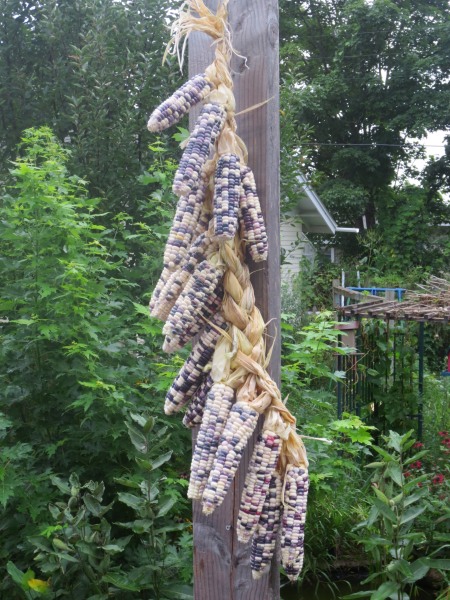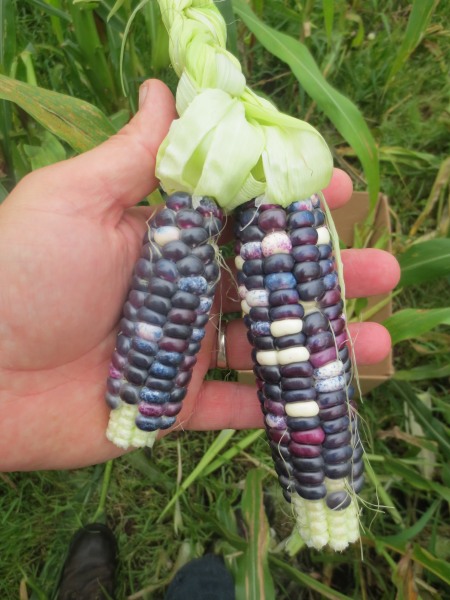
I would not call it an art form. It is just the way corn sorting, drying, and storing was described by Buffalo Bird Woman in an old history of Native American Agriculture I read years ago (and honestly still go back and re-read, it is worth it). There are multiple reasons given by her to do it this way. First of all, they did not leave their corn on the plants to fully dry. They had much the same crop predation issues I do, so as soon as they were getting mature ears, they were harvesting them.

For transportation out of the fields, the best cobs, meant to be saved for seed, would be braided into long lengths, generally at least a person’s full height, which could be draped over a shoulder for carrying, or the back of a pony.

And if inclement weather was going to strike, it made it easy to move large amounts of corn under shelter when it had been drying in the sun just previously.
Even the corn they did not mean to keep for seed was left on the cob until fully dried to the point where it could be stored until needed at some point in the future, but it was not braided and it was stored shelled off of the cob in lined pits under ground. The seed corn was stored much the same way, but being braided together differentiated it from corn that was just for eating, as opposed to selected cobs for planting.

I also do smaller braids, such as in this case where it is to show a stalk that had two dark cobs of fairly good development on one plant. Most plants will produce only one cob, and if there is a second, it is very stunted and often few viable seeds. This keeps the cobs together for seed selection later.

Same reason here.
Anyway. It was requested that I show what I meant by braiding corn. That is it.

